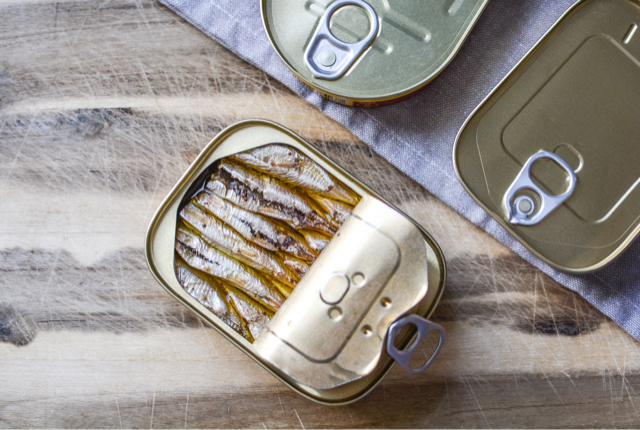welcome to the blog, let's
debunk the nutrition junk
Bone health, the moment we hear bones I’m pretty sure we remember our elementary days. When everyone told us we needed to “build strong bones,” that memory is probably etched into our brain. However, many may not realize that without continuous effort of proper fueling our bones will not magically keep staying strong.

Bone Basics
Just because we stop growing doesn’t mean our bones are “dead,” bones are living tissue made of calcium, protein, some type I collagen, a couple other minerals, and water. (1) Bones have an outer and inner portion to them. The inside or “filling” of the bone is where blood travels through carrying nutrients and oxygen. Meanwhile, the outside structure is made up of the calcium and various minerals as mentioned previously.
Functionally, there is a continual turnover of old cells breaking down and being removed (osteoclasts) all while new bones get created (osteoblasts). This constant turnover or bone building is what allows our bones to stay strong!
Take note that our bones don’t manage to keep up this “remodeling project” on their own. The entire skeletal system requires continued energy and nutrients daily. If low amounts of energy are provided for the bones to remodel then they don’t have the right amount of supplies to build new material. This leads us to what actually happens when there are low energy stores for our bones.
Bone Building
Why is it so important for us to build bones early on in life?
Bone building and peak growth occurs at age 16 in females, and around 18-20 years old in males. If there is interference with bone growth such as not getting adequate “materials” aka food for the bones through these life stages the bone can become malformed creating a potential for weaker bones later on in life. (1)
As we continue through life bones without adequate materials or energy cause the inner portion of the bone to become depleted, which creates holes. Weak bones become at risk for stress reactions, also an indicator of inflammation. If this is ignored the stress reaction eventually turns into a stress fracture. Therefore the bone continues to break down due to utilizing energy but there is not enough energy to rebuild and replace that which is lost.

BONEafied Food Sources
When your body is low in Calcium, a main component of bone health, it pulls calcium out of your bones to keep blood calcium levels normal. This is how the bone weakening process begins and can spiral into osteoporosis or other bone conditions if low intake continues.
It’s not all about Calcium though, Vitamin D is a main component in allowing for absorption of calcium to occur in the body! Thankfully our bodies are capable of producing vitamin D on its own versus calcium needs to be taken in via food. Having a food first mentality is the best approach because most supplements can come with side effects if you end up over supplementing with calcium. Additionally, food sources provide you with lots of other vitamins and minerals rather than a single concentrated dose of calcium.
If you are prone to low calcium absorption, have low bone density, or osteoporosis then talk to your doctor to discuss potential needs of calcium supplementation. The Academy of Nutrition & Dietetics recommends 3 cups of “dairy” food sources daily, aka items which contain calcium. (2)

Adequate Calcium Food Sources (~30% of DV):
- 4 oz Tofu
- 3 oz. Canned Mackerel
- 3 oz. Canned Salmon (with bones) – try my salmon spread!
- 3 oz. Canned Sardines (with bones)
- 1 oz. Scoop Whey Protein Isolate (varies by brand)
- 8 oz. Glass of Milk
- 8 oz. Calcium fortified Orange Juice
- 1 Cup of Yogurt
- 1 Cup Calcium fortified Soy Milk
- ⅓ Cup Shredded Cheese
- ½ Cup Ricotta Cheese
- 2 Cups Cottage Cheese
- 1 Cup Frozen Yogurt
- 12 oz Yogurt drink
- 1.5 Cups Collar Greens
- 1 Cup Dried Figs
Athlete Needs – Bone Health

The reason athletes are at a higher risk for stress fractures is due to the increased demands/strain placed on depleted bones leading to more bone-related injuries/fractures. If you’ve found yourself with more than 2 stress fractures in a single year you may want to head to the doctor to check out your calcium levels and/or get a bone density scan!
Runners top the list for bone related injuries due to the sport requiring continued strain on the lower extremities of the body (i.e. foot, ankle, hips, etc.) Another key indicator for female athletes in regards to bone health is oligomenorrhea or amenorrhea.
Oligomenorrhea is known as infrequent menstrual periods, which means you go more than 35 days without menstruating. This is one of the most common signs of menstrual dysfunction in regards to being in an energy deficit.
Amenorrhea is the next step in menstrual dysfunction meaning a loss of your menstrual cycle completely. For each year of amenorrhea there is a 2% decline in bone density. You can heal from these detrimental side effects of low energy intake with the help from a registered dietitian! It has been found that your bone density can increase 6% within the first year of bringing your menstrual cycle back and another 3% the following year. (3)
Citations:
1. Boskey, Adele L. “Bone Composition: Relationship to Bone Fragility and Antiosteoporotic Drug Effects.” BoneKEy Reports, Nature Publishing Group, 4 Dec. 2013, https://www.ncbi.nlm.nih.gov/pmc/articles/PMC3909232/.
2.“Calcium.” EatRight, https://www.eatright.org/food/vitamins-and-supplements/types-of-vitamins-and-nutrients/calcium.
3. Nazem, Taraneh Gharib, and Kathryn E Ackerman. “The Female Athlete Triad.” Sports Health, SAGE Publications, July 2012, https://www.ncbi.nlm.nih.gov/pmc/articles/PMC3435916/.